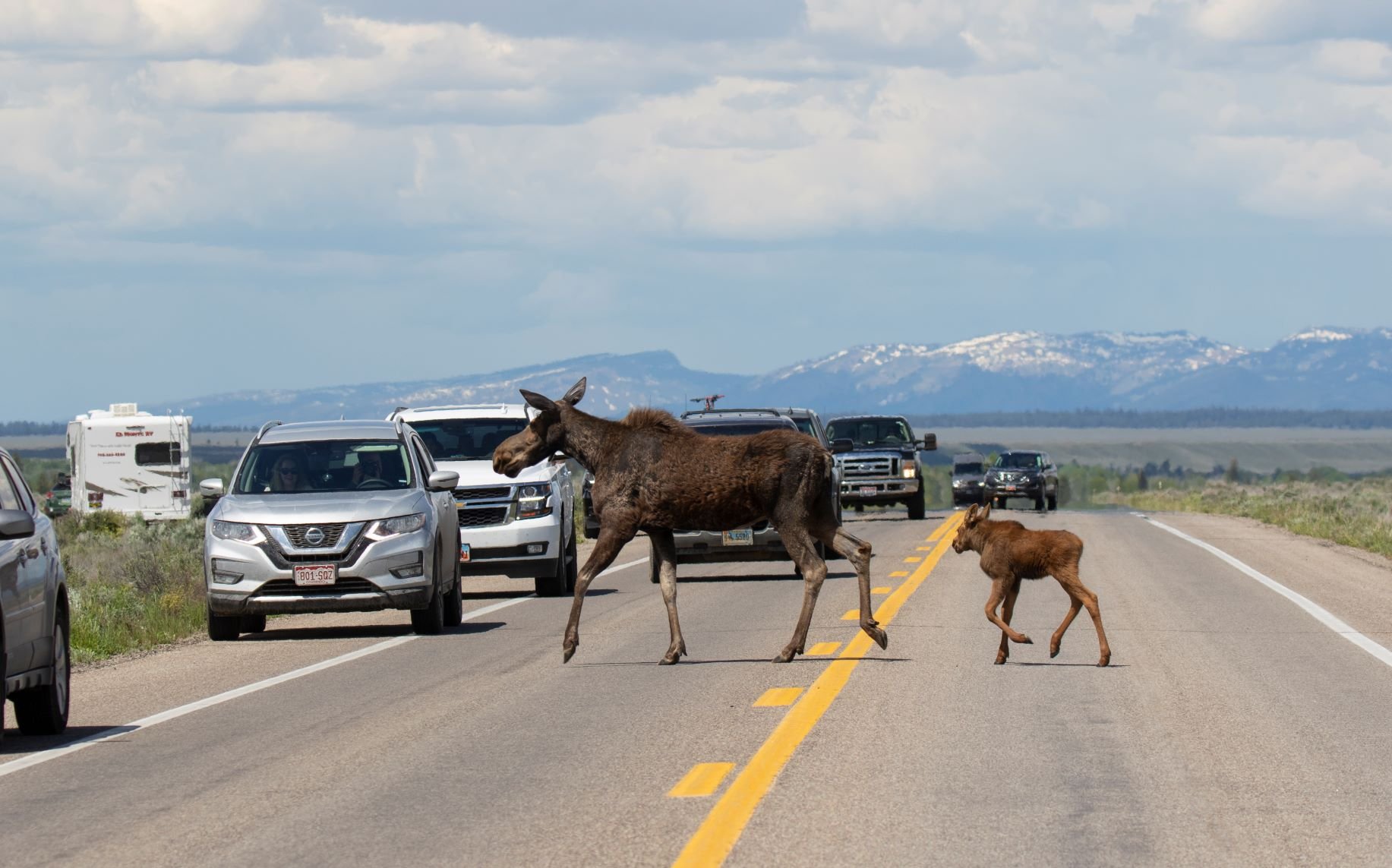Next steps for safer roads in Teton County, Wyoming
For the past several years the Greater Yellowstone Coalition has been working with our partners to create safer roadways while at the same time promoting wildlife movement across the landscape. Among several wildlife crossings wins realized last year, this past November we celebrated a historic vote in Teton County in support of a $10 million wildlife crossing measure. GYC worked to get this Specific Purpose Excise Tax (SPET) measure on the ballot and teamed up with our partners at the Jackson Hole Conservation Alliance to form a Political Action Committee which received overwhelming support from local and national organizations who helped fund the initiative.
Now that funding has been secured, we are looking at Teton County’s most critical areas for improvements using the Teton County Wildlife Crossing Master Plan to guide this process. The #1 priority site identified in this plan is where moose collisions have become the norm; an area adjacent to the Snake River bridge at the intersection of Highways 22 and 390. Chris Colligan, GYC’s Wildlife Program Coordinator, is a member of the advisory committee for this project and will continue to offer his recommendations on how money will be spent in this crucial moose habitat.
Through this process, GYC has advocated for 4 priority crossing locations at the Snake River bridge site, with a focus primarily on designs to accommodate moose, and which will allow most other species to pass. The Wyoming Department of Transportation (WYDOT) has agreed to fund the two highest priority crossings at this site, and Teton County has agreed to fund the two remaining crossings through SPET funds, estimated to be approximately $3 million. GYC will work with Wyoming Game and Fish Department again in 2020 on moose collaring and research efforts in this corridor to continue to monitor the health and movement of these iconic animals.
Planning and engineering for this project are underway and construction will begin in 2023. Highway projects like this require a lot of planning and coordination. Planning usually starts nearly a decade in advance of large construction projects. Funding is only one element; there are also many issues that arise with easements, land-ownership, fencing, and engineering. Working with WYDOT through these issues is critical to our success.
Teton County is in the process of determining how to fund other wildlife crossing projects with the remaining SPET funding. Priorities have been identified on Highway 22 for a potential overpass and an at-grade crossing and fencing work at Camp Creek near Hoback Canyon, where elk are often hit during their annual migration. Funding will also support planning efforts and short-term mitigation projects that can be started immediately. These include improving culverts for fish passage around the county, as well as working with WYDOT on improving fence-end treatments on crossings currently being built.
GYC is encouraged at the support and momentum that wildlife crossings are receiving in Wyoming and beyond. We believe crossings are one of the most effective tools available and building them will pay dividends into the future in terms of roadway safety, wildlife conservation, and maintaining a healthy local economy. Thank you for spreading the word about this important work, and for all you do for Greater Yellowstone.
- Mac Dukart, Communications and Engagement Associate

